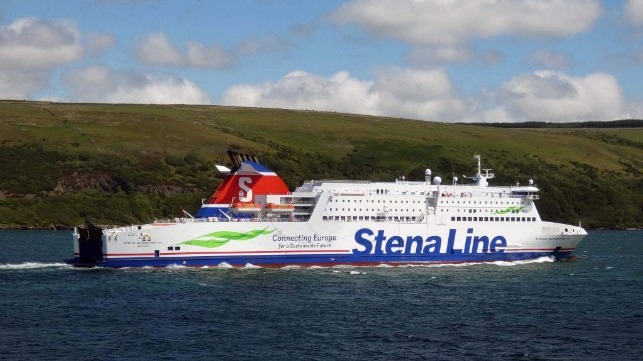Two Stena Superfast RoRos Next Up for Methanol Conversions

Two of Stena Line’s fast RoRos operating between Southland and Northern Ireland have been selected for the company’s planned methanol conversion program. It was reported nearly a year ago that the company was working with Wartsila on the planned conversion of ferries following in the footsteps of its pioneering conversion project in 2015.
Conversions to methanol-fueled propulsion are starting to gain momentum in the industry with Maersk and others planning overhauls of their containerships. It also follows the introduction of the first large ocean-going containerships with dual-fuel methanol propulsion plants at the leading edge of a coming wave of introductions.
Stena completed the first-ever conversion to methanol in 2015 and continues to operate the only large vessel retrofitted for the emerging alternative fuel. The Stena Germanica pioneered and also provided a critical experience that looks to educate the new efforts. Lloyd’s Register which worked on the 2015 project and is taking over the classification for the two fast ferries highlights that 10 years ago there were no regulations and guidelines and even materials had not been developed for methanol operations.
“Leveraging our expertise and experience gained from the successful conversion of the Stena Germanica in 2015, we are poised to deliver another groundbreaking solution that will pave the way for greener and more efficient ferry operations,” says Paul Herbert, Principal Technology Specialist for Lloyd’s Register.
The new project will involve two vessels, Stena Superfast VII and Stena Superfast VIII, built in 2001 by Howaldtswerke-Deutsche Werft (HDW) in Kiel, Germany for Attica Group's subsidiary Superfast Ferries. They operated for Superfast and later Tallink before moving under charter to Stena in 2011 and being acquired by Stena in 2017.
Each vessel is 30,285 gross tons with an overall length of (203 meters). They have a capacity for 1,300 passengers and 660 cars and are distinguished by their operating speed of 23 knots. They are powered by four Wärtsilä-Sulzer 12 ZAV40S generating 46000 kw.
The retrofit process will convert two out of the four main engines in each vessel to run on methanol alongside MGO (Marine Gas Oil). The ship’s bunkering, storage, fuel supply, and supporting systems will also be adapted for methanol. The report did not announce a timeline for the conversion or if a shipyard has been selected but it was previously said they planned the conversions for 2025.
Lloyd’s Register highlights the motivation for the conversion program has changed since the project nearly a decade ago. Then the focus was on the incoming regulations limiting sulfur (SOx) and nitrous oxide (NOx) emissions. Current ship conversions Lloyd’s says are driven by decarbonization demand, with operators aiming to use renewable methanol to reduce exposure under the European Union’s Emissions Trading System or comply with emissions intensity requirements under the forthcoming FuelEU Maritime regulation.

that matters most
Get the latest maritime news delivered to your inbox daily.
Stena last week reported that it planned large reconstructions for two of its cargo RoRos including the addition of an additional deck. Those projects are being driven by improving the vessels’ CII (Carbon Intensity Index) ratings.
The line also ordered two newbuilds from China last year that will be hybrid RoRos powered by methanol. The vessels being called NewMax are due to go into service in autumn 2025, operating from Stena Line’s port in Belfast, Northern Ireland.
